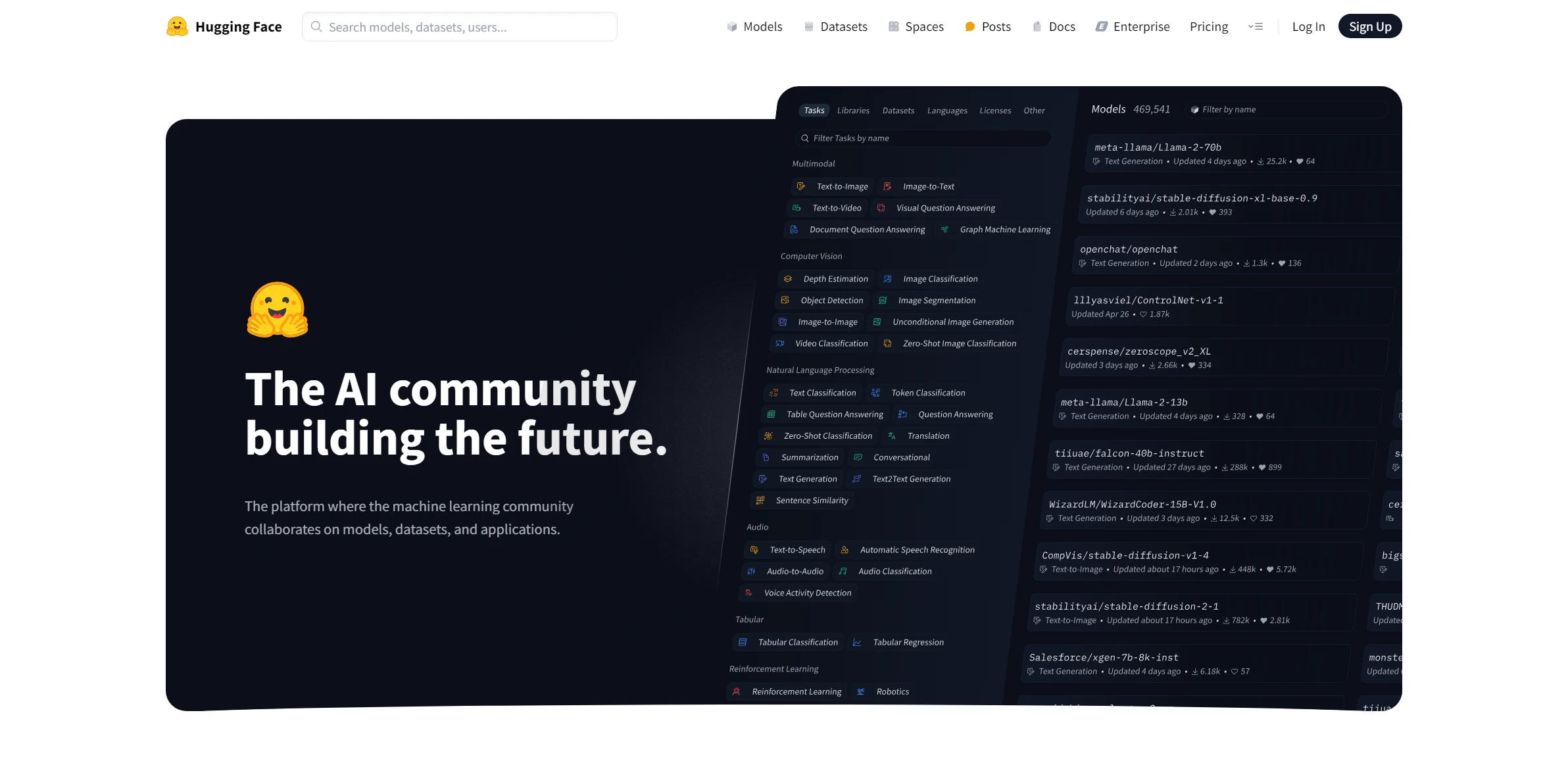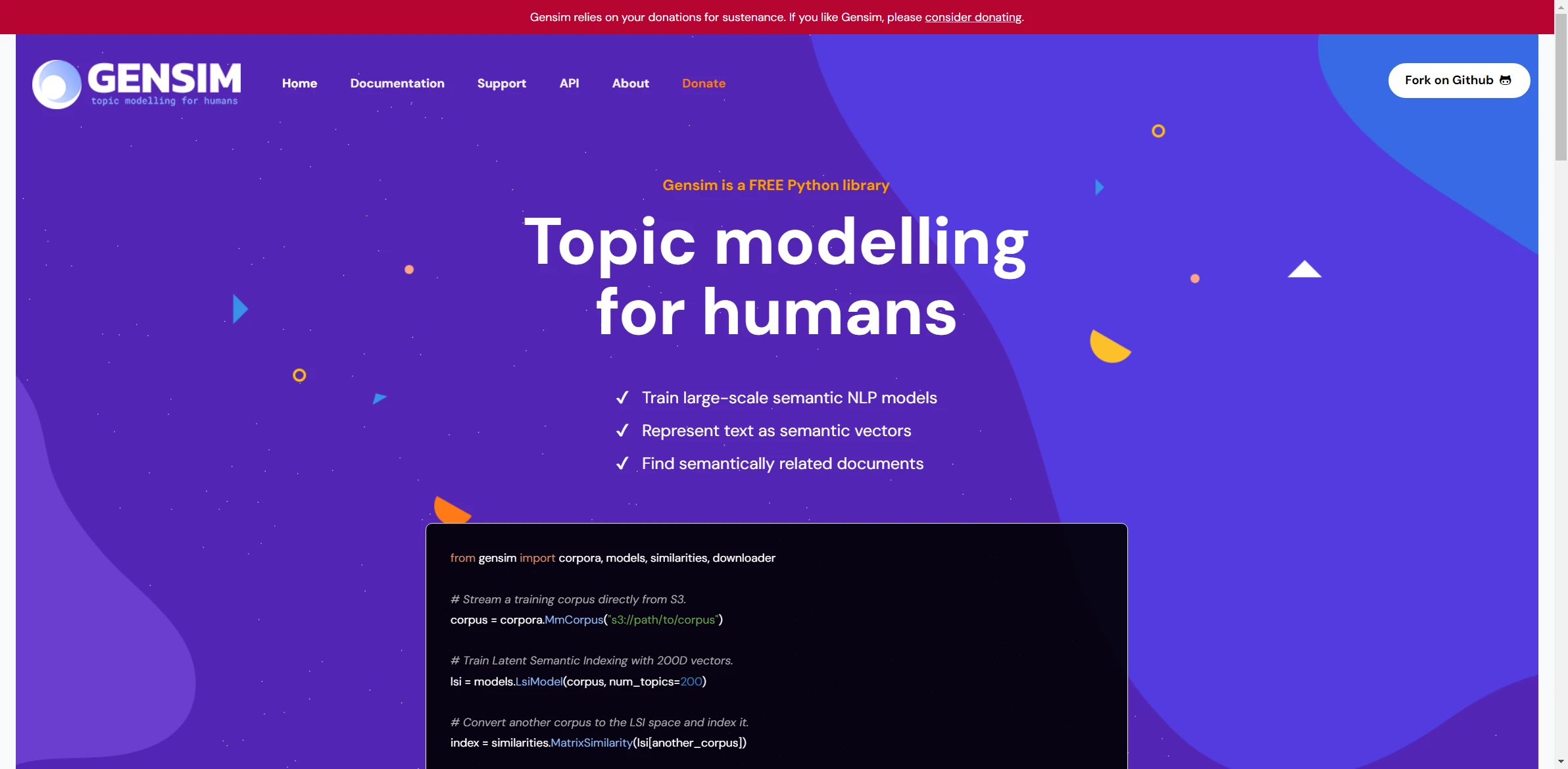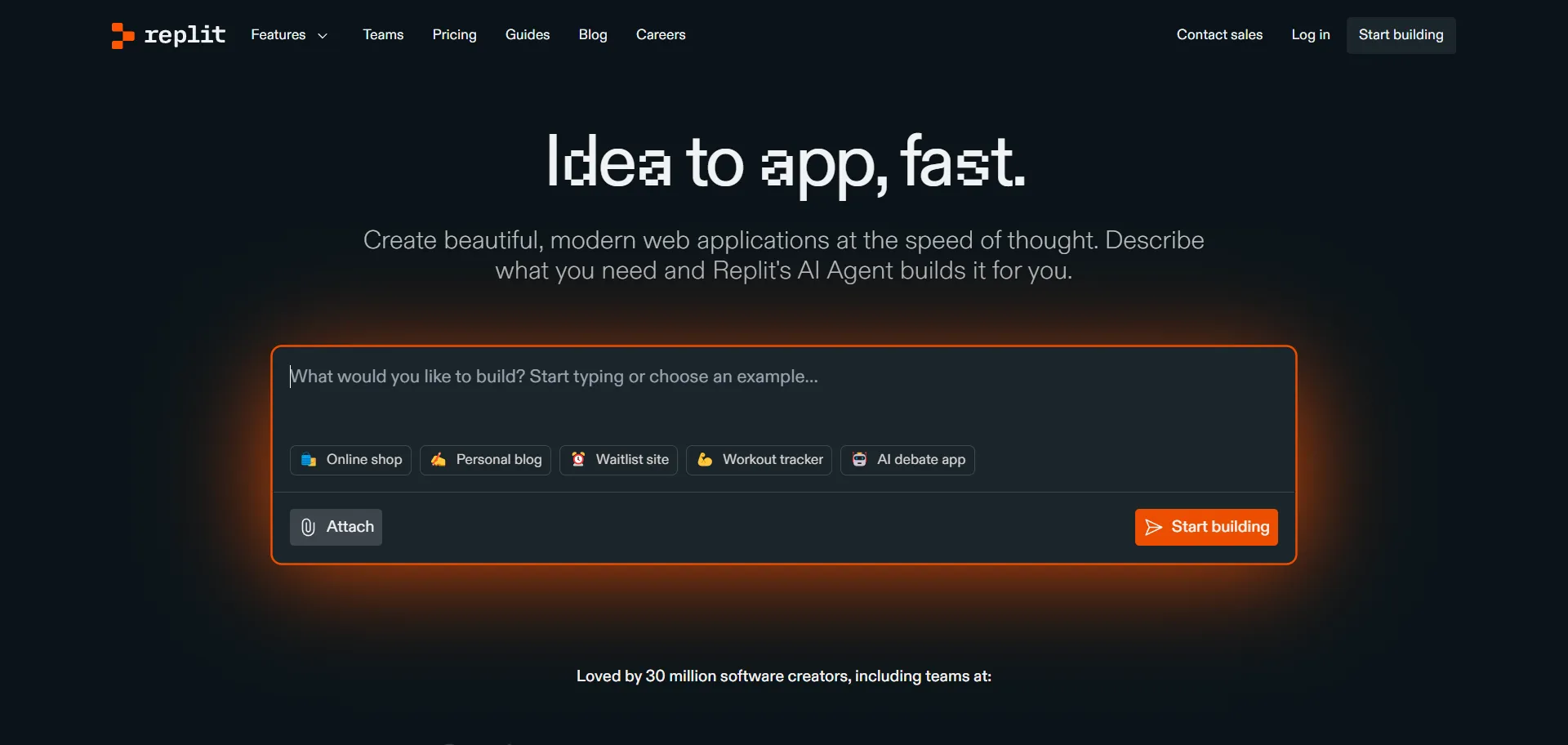Artificial Intelligence Tool HuggingFace

DESCRIPTION
Hugging Face is an innovative artificial intelligence tool that has revolutionized the way developers and researchers interact with natural language processing (NLP). At its core, Hugging Face serves as a hub for pre-trained transformer models, making it easier for users to implement advanced machine learning techniques without needing extensive expertise in the field. The platform offers a user-friendly interface and a comprehensive ecosystem of libraries, including the widely-used Transformers library, which provides access to a wide range of state-of-the-art models for tasks such as text classification, translation, and summarization.
One of Hugging Face’s key functionalities is its model hub, which hosts thousands of pre-trained models contributed by the community. This extensive repository allows users to fine-tune existing models or deploy them directly for specific applications, significantly reducing the time and computational resources required for training from scratch. With models available for various languages and tasks, developers can easily integrate advanced AI capabilities into their applications, enhancing functionalities such as chatbots, content generation, and sentiment analysis.
The practical impact of Hugging Face is evident in its ability to democratize access to powerful AI tools. By lowering the barriers to entry for machine learning, Hugging Face empowers businesses, researchers, and hobbyists alike to leverage sophisticated NLP techniques. This has led to a surge in innovation across industries, from improving customer service with intelligent agents to advancing research in linguistics and cognitive science, thereby fostering a more inclusive AI landscape that benefits a broad spectrum of users.
Why choose HuggingFace for your project?
Hugging Face stands out for its user-friendly interface and extensive library of pre-trained models, making it accessible for both beginners and experts. Its Transformers library supports numerous tasks, including natural language processing, text generation, and translation, enabling rapid prototyping. Unique features like the Model Hub allow users to share and access thousands of models easily. Additionally, integration with popular frameworks like TensorFlow and PyTorch enhances flexibility. Real-world applications include chatbots, sentiment analysis, and content summarization, empowering businesses to leverage AI without extensive coding. Hugging Face’s commitment to open-source fosters community collaboration, driving innovation in AI development.
How to start using HuggingFace?
- Visit the Hugging Face website at huggingface.co to access their tools and resources.
- Create an account or log in to access the models and datasets available on the platform.
- Explore the Model Hub to find pre-trained models suitable for your use case, such as natural language processing, computer vision, or audio processing.
- Utilize the Transformers library by installing it via pip with the command
pip install transformersin your development environment. - Load a model and tokenizer in your code using the library, and begin implementing AI tasks such as text generation, classification, or translation.
PROS & CONS
 Extensive library of pre-trained models, allowing for quick deployment and experimentation.
Extensive library of pre-trained models, allowing for quick deployment and experimentation. User-friendly interface that simplifies the process of model training and fine-tuning.
User-friendly interface that simplifies the process of model training and fine-tuning. Active community support and extensive documentation that help users troubleshoot and learn effectively.
Active community support and extensive documentation that help users troubleshoot and learn effectively. Versatile framework that supports multiple languages and tasks, making it adaptable for various projects.
Versatile framework that supports multiple languages and tasks, making it adaptable for various projects. Strong emphasis on collaboration, enabling easy sharing and deployment of models across teams and organizations.
Strong emphasis on collaboration, enabling easy sharing and deployment of models across teams and organizations. Can require significant computational resources, making it less accessible for smaller projects or teams.
Can require significant computational resources, making it less accessible for smaller projects or teams. May have a steep learning curve for users who are not familiar with machine learning concepts.
May have a steep learning curve for users who are not familiar with machine learning concepts. Limited support for niche or highly specialized use cases compared to other dedicated tools.
Limited support for niche or highly specialized use cases compared to other dedicated tools. Community support can vary, leading to challenges in finding solutions for specific problems.
Community support can vary, leading to challenges in finding solutions for specific problems. Potential for slower updates or feature releases compared to other competitive platforms, impacting the adoption of the latest advancements.
Potential for slower updates or feature releases compared to other competitive platforms, impacting the adoption of the latest advancements.
USAGE RECOMMENDATIONS
- Start with the Hugging Face documentation to understand the basics of the library and its functionalities.
- Explore the Model Hub to find pre-trained models that suit your specific use case.
- Utilize the Transformers library for easy access to state-of-the-art natural language processing models.
- Experiment with the Datasets library to easily load and preprocess datasets for your projects.
- Take advantage of the Trainer API for streamlined training and evaluation of your models.
- Engage with the Hugging Face community through forums and Discord for support and collaboration.
- Utilize the integration with popular deep learning frameworks like PyTorch and TensorFlow for flexibility.
- Keep an eye on the latest research and updates from Hugging Face to leverage new features and improvements.
- Consider fine-tuning models on your own datasets to improve performance for specific tasks.
- Leverage the Hugging Face Hub to share your models and datasets with the community.
SIMILAR TOOLS

Gensim
Gensim revolutionizes the way we approach tasks related to developing tools that maximize productivity. Built to overcome any technical challenge with ease.
Visit Gensim
Replit
Replit redefines expectations in solving complex problems efficiently. The ideal option for those seeking constant innovation.
Visit Replit
HuggingFace
Simplify complex NLP and machine learning tasks with this powerful and adaptable tool.
Visit HuggingFace